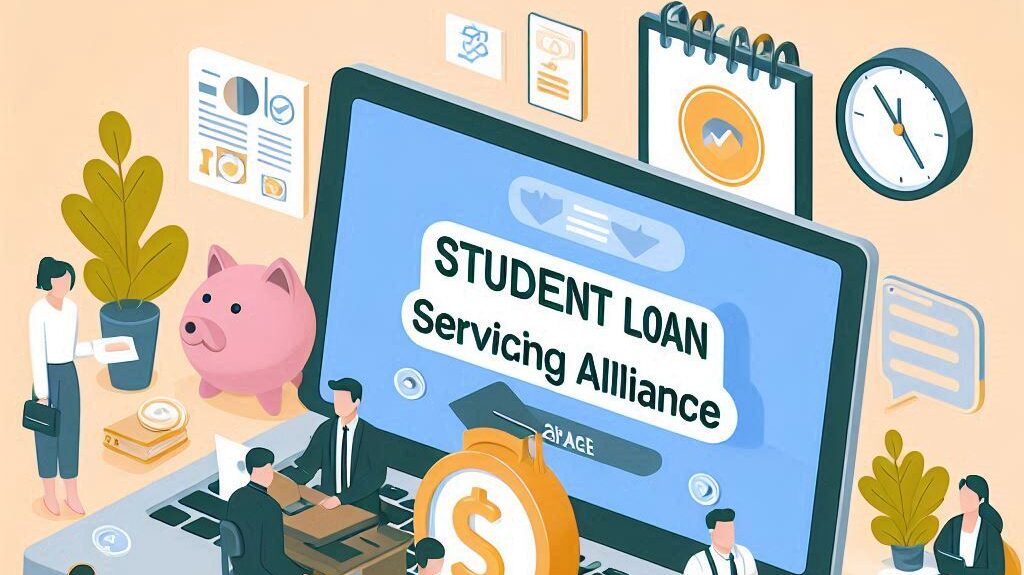Uncover the role of the Student Loan Servicing Alliance in shaping the student loan landscape. Learn how this organization impacts borrowers and the future of student debt management.
Introduction
In the complex world of student loans, borrowers often find themselves lost in a labyrinth of terms, conditions, and servicing companies. Enter the Student Loan Servicing Alliance (SLSA), a lesser-known but influential player in the student debt arena.
This article aims to shed light on the SLSA, its functions, and its impact on the millions of Americans grappling with student loan debt.
What is the Student Loan Servicing Alliance?
| Aspect | Description |
|---|---|
| Founded | 2007 |
| Type | Non-profit trade association |
| Members | Federal and private student loan servicers |
| Purpose | Advocate for student loan servicers and improve loan servicing practices |
The Birth of SLSA
The Student Loan Servicing Alliance emerged in 2007 as a response to the growing complexities in the student loan industry. As the number of borrowers and the total amount of student debt skyrocketed, the need for a unified voice representing loan servicers became apparent.
Core Objectives
- Advocacy: Representing servicers’ interests in policy discussions
- Standardization: Promoting consistent practices across the industry
- Education: Informing policymakers and the public about student loan servicing
- Compliance: Ensuring members adhere to regulatory requirements
The Role of SLSA in the Student Loan Ecosystem
Bridging the Gap Between Servicers and Borrowers
The SLSA acts as a crucial intermediary, helping to translate complex policies into actionable servicing practices. This role is particularly important given the often contentious relationship between borrowers and servicers.
Influencing Policy
Through its advocacy efforts, the SLSA has a significant impact on student loan policies. The organization regularly provides input on proposed regulations and legislation, shaping the landscape of student loan servicing.
Case Study: SLSA’s Influence on the CARES Act
During the COVID-19 pandemic, the SLSA played a pivotal role in implementing the student loan provisions of the CARES Act. Their input helped shape how the temporary pause on federal student loan payments was executed across different servicers.
Standardizing Practices
One of the SLSA’s key contributions is its work towards standardizing servicing practices. This effort aims to create a more consistent experience for borrowers, regardless of their servicer.
The Impact on Borrowers
Pros of SLSA’s Work
- Improved consistency across servicers
- Advocacy for technological improvements in loan servicing
- Potential for more borrower-friendly policies through industry-wide standards
Cons and Criticisms
- Perception of prioritizing servicer interests over borrowers
- Lack of direct borrower representation in the organization
- Potential for resisting reforms that could benefit borrowers but impact servicer profits
The Future of Student Loan Servicing
Technological Advancements
The SLSA is at the forefront of pushing for technological improvements in loan servicing. This includes better online platforms, more user-friendly interfaces, and improved communication channels between servicers and borrowers.
Regulatory Changes on the Horizon
With ongoing debates about student loan forgiveness and reform, the SLSA is likely to play a significant role in shaping future policies. Their expertise and influence will be crucial in implementing any major changes to the student loan system.
Conclusion
The Student Loan Servicing Alliance, while not a household name, plays a vital role in the complex ecosystem of student loans. As borrowers navigate their repayment journeys, understanding the role of organizations like SLSA can provide valuable context to the forces shaping their experiences.
While the SLSA’s work has led to some improvements in loan servicing practices, there’s still much to be done to address the challenges faced by borrowers. As the student loan landscape continues to evolve, the role of the SLSA will undoubtedly remain significant, for better or worse.
FAQs
- What is the primary purpose of the Student Loan Servicing Alliance?
The primary purpose is to advocate for student loan servicers and work towards improving loan servicing practices. - How does the SLSA impact individual borrowers?
The SLSA impacts borrowers indirectly through its influence on policies, standardization of practices, and advocacy for technological improvements in loan servicing. - Can borrowers join or provide input to the SLSA?
Currently, the SLSA does not have a mechanism for direct borrower membership or input. It primarily represents the interests of loan servicers. - How has the SLSA responded to calls for student loan reform?
The SLSA typically provides input on proposed reforms from the perspective of servicers, often focusing on the practicality and implementation challenges of proposed changes. - Does the SLSA have any regulatory power over loan servicers?
No, the SLSA is a trade association and does not have regulatory power. However, its standards and recommendations can influence industry practices.

